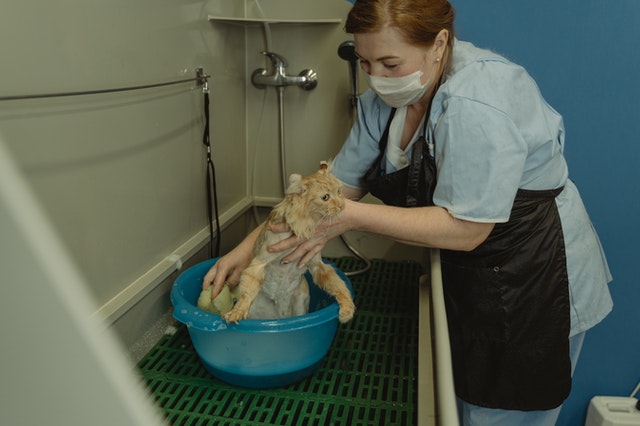What Is an Approved Veterinary Assistant (AVA)?
Have you heard of Approved Veterinary Assistants (AVAs)? They are paravetinary professionals who assist licensed veterinarians in caring for animals. Paravetinary, of course, is a support role. All paravetinary professionals, including AVAs, help licensed veterinarians diagnose and treat medical conditions in animals. For a better understanding of AVAs and how they differ from other paravetinary professionals, keep reading.
The Basics of AVAs
An AVA is a veterinary assistant who has passed the AVA examination. Developed by the National Association of Veterinary Technicians in America (NAVTA), the AVA examination is designed to test aspiring AVAs on their knowledge and competency regarding veterinary medicine. Those who pass this examination receive the destination of AVA.
The AVA examination was created by NAVTA. NAVTA, of course, is a nonprofit organization that focuses on the promotion and education of veterinary technology professions. While AVAs aren’t veterinary technicians, nor are they are veterinary technologists, they require many of the same fundamental skills. The AVA examination targets these skills. Only after passing the AVA examination can you become an AVA.
Veterinary Assistants vs AVAs
AVAs and veterinary assistants are the same. They are both paravetinary professionals who assist licensed veterinarians. The only difference is that AVAs are required to pass an examination, whereas traditional veterinary assistants are not.
Whether you work as a veterinary assistant or an AVA, you’ll perform many of the same tasks. Veterinary assistants and AVAs are both paravetinary workers who assist licensed veterinarians in caring for animals. The barrier of entry to become an AVA, however, is higher than that of becoming a traditional veterinary assistant. As per NAVTA’s requirements, all AVAs must pass the AVA examination. Traditional veterinary assistants, on the other hand, aren’t required to pass any formal examination. Rather, they can begin working immediately.
Some of the duties performed by veterinary assistants and AVAs include the following:
- Providing food and water for animals
- Walking animals
- Clipping animals’ nails
- Bathing animals
- Cleaning and sterilizing equipment
- Restraining animals
- Handling appointments
Benefits of Working as an AVA
Working as an AVA will give you a sense of pride knowing that you are helping animals in need. While some owners bring their pets to a veterinary clinic for regular checkups, most appointments involve an injury or adverse medical condition. Whether it’s a dog, cat, hamster, turtle or parrot, the owner may seek treatment for his or her injured or sick pick. As an AVA, you’ll provide assistance in caring for the pet, thus paving the way for a full recovery with a positive prognosis.
You’ll probably have an easier time finding a job if you pass the AVA examination. According to the U.S. Bureau of Labor Statistics (BLS), there are roughly 100,000 veterinary assistants working in the United States. Most of these veterinary assistants, though, haven’t passed the AVA examination. Therefore, they aren’t AVAs; they are simply traditional veterinary assistants. If you pass the AVMA examination, you can mention this credential on your resume so that you stand out from other job applicants.
Working as an AVA can provide a stepping stone to other professions in the field of veterinary medicine. Many AVAs, for example, aspire to become licensed veterinarians. While working as an AVA, they study veterinary medicine. Working as an AVA isn’t a prerequisite for becoming a licensed veterinarian. Nonetheless, it will provide you with real-world training that can increase your chances of earning a Doctorate of Veterinary Medicine (DVMA) and, thus, becoming a licensed veterinarian.
It’s also fairly easy to become an AVA. There are still requirements, such as passing the AVA examination, but it requires less schooling and less work than many other veterinary professions. These are just a few benefits of working as an AVA.

How to Become an AVA
The main requirement for becoming an AVA is passing the AVA examination. The examination consists of roughly 100 questions, and you must complete it in 150 minutes or less. To pass the examination, you’ll have to score a 75% or higher. If you fail the examination, you’ll have to retake it. You can find the AVA examination offers at colleges and other higher-education institutions. Working as an AVA requires passing the AVA examination at one of these colleges or higher-education institutions.
Before you can take the AVA examination, however, you’ll need to complete a NAVTA-approved veterinary assistant program. Veterinary assistant programs, of course, are educational programs that teach aspiring veterinary assistants, including AVAs, about the veterinary assistant profession. They are offered by many of the same colleges and higher-education institutions that offer the AVA examination. You can learn more about these veterinary assistant programs by visiting NAVTA’s official website here.
Once you’ve completed a NAVTA-approved veterinary assistant program, you can sign up to take the AVA examination. Assuming you score a 75% or higher on the examination, you’ll be designated as an AVA.

